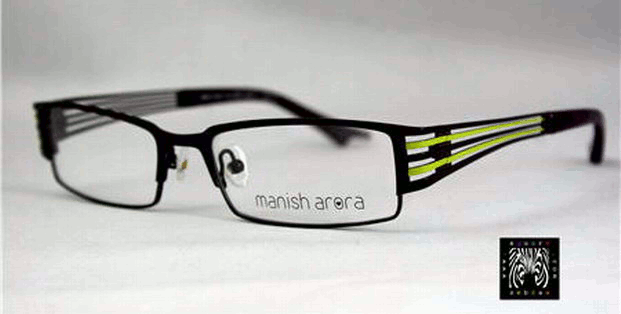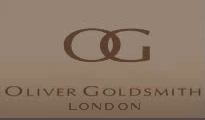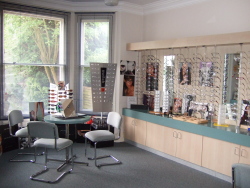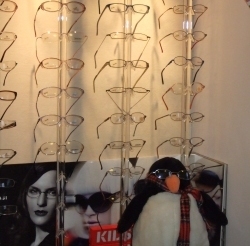
At any one time we have over 400 frames in stock. We have a selection of frames to suit most styles and pockets. The manufacturers we stock are tried and tested, we avoid poor quality frames.
Frames
We have selection of frames to cover all tastes and pockets. We have quality childrens frames as well as those covered with the NHS voucher. As children and young people are eligible for a voucher until they are 18 (in full time education) we give a 20% discount on adults frames. Our frame stock includes:
 |
 |
 |
 |
 |
|
 |
 |
 |


The price range of the frames vary from £35.00 up to £220.00. This largely depends on the material used and design of the frame.
Spectacle Lenses
The technical advances in spectacle lenses over the last 10 years has been very dramatic. Glass and plastic lenses are available in high index materials and with aspheric surfaces which make the lenses thin, light and distortion free. Light reacting lenses, Colormatic lenses, allow spectacles to be used in all light conditions. Polarising lenses are the ideal sun lens, they cut down glare as well as having a dark tint, which makes them very suitable for driving, water sports and fishing.
A hard coat makes a plastic lens more scratch resistant. An anti reflection coat is probably the most useful of all coats, it reduces reflection from the front and back lens surface. The lenses are more cosmetically pleasing, as your eyes are seen, not a veil of reflections. More importantly the coating enhances the performance of the lens, especially when driving at night, the glare from on coming headlights is very much reduced. A great example of coating technology can be found in the Rodenstock Solitaire TopCoat coating. More on this can be found here on the Rodenstock website.
Older anti-reflection coatings got a bad name because they were not easy to clean. The newer coatings are anti static that allow easy cleaning and reduce dust contamination.
As we get older the lens in the eye continues to grow. This has two effects. It can produce spherical aberration, influencing night vision, and, more importantly, it inhibits the ability for the lens to change shape when reading. As a result an eye with clear distance vision will struggle to focus at near, and a lens that would correct your vision for distance is no longer adequate for close vision.
This is why there are reading, distance, bifocal and variable focus lenses. The only reliable way forward is to be born 20 years later!
We find people prefer variable focus lenses these days, because as well as being cosmetically more acceptable, they give distance reading an intermediate focus.
History of variable focus lenses.
Variable focus lenses have passed through many stages of development since they were introduced fifty years ago.
By today's standards, the old spherically designed lenses of the 1970's are just about un-wearable.
Then along a lens with a came with an aspheric front surface. This was an improvement over a spherical lenses as they reduce distortion. These lenses were very popular with the industry as they permitted the use of semi-finished blanks, which meant that relatively small workshops could finish the lenses by grinding the back surface.
These lenses went through several stages of development, correcting the lens for more points to reduce distortion, and the term hard and soft lens design were introduced. A soft design has an easier transition into the areas of distortion, to attempt to reduce distortion, but reducing clarity. A hard design increased the clarity but also increased distortion. This all goes back to the principle of not being able to make an omelette without breaking eggs!
The first big change was the use of two aspheric surfaces, giving the designers another tool to reduce distortion. This was not popular in the prescription industry, as it meant that the back surface of the lens could no longer be worked cheaply. However, they were a revolution to spectacle lens wearers in terms of performance.
To further enhance the vision the reading addition is now put on the back surface of the lens.
The stage we are at now in variable focus lens design is to custom design the lens for the prescription, patient and frame. With modern computer controlled machinery it is possible to include many variables. However it takes longer for the lenses to be prepared as they are not made in the UK, and they are very much a premium lens.
The latest lenses are the best to wear, but also more expensive. In the market place all types of lenses are available and may be re-branded under a different name. It is important to go to an Optometrist you feel you can trust, where you are going to get professional advice and measurements for the lenses.
A lot of our lenses are tailor made, and to get the best optical results, they have to be worked at the manufacturers laboratory, normally sent from Germany. Therefor the lenses take from three working days to 10 working days to be prepared. The vast majority of our spectacles are ready within a week.
We have Teleshape facility that allows us to trace the shape of a frame and email this to Rodenstock's computer, which speeds things up considerably. As there are over a hundred variations of lenses we have a frame price and a lens price except for a few All In One promotions. An example of our lens prices are
- Single vision plastic(uncoated) - from £50.00 per pair
- Mid index (uncoated) - from £116.00 per pair
- High index single vision with hard an anti reflection coating - from £164.00
- Bifocal lenses (uncoated) - from £90.00
- Progressive lenses
- budget (hard coat)- from £146.00
- mid price (hard coat) - from £198.00
- premium (hard coat) - from £244.00

